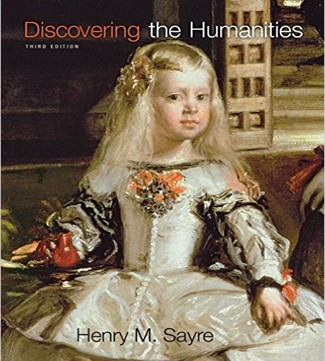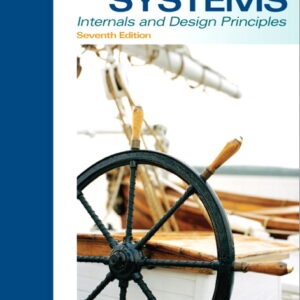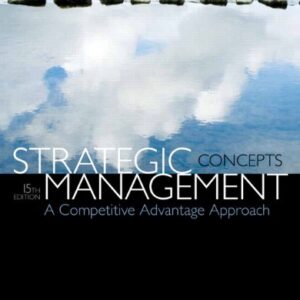Discovering the Humanities 3rd Edition Sayre Test Bank
$35.00
Discovering the Humanities 3rd Edition Sayre Test Bank
978-0133877700
Sayre, Discovering the Humanities, 3e, Test Item File: Chapter 1, The Prehistoric Past and the Earliest Civilizations
Multiple-Choice Questions
1. How does culture manifest itself?
a. in the biology of a people
b. in the geography of a place
c. in the laws, customs, ritual behavior, and artistic production of a group
d. only in architecture
Question Title: TB_01_01_Beginnings of Culture_Remember_1.1
Answer: c
Learning Objective: 1.1 Discuss the rise of culture and how developments in art and architecture reflect the growing sophistication of prehistoric cultures.
Topic: The Beginnings of Culture
Skill Level: Remember the Facts
Difficulty Level: Easy
2. What are the paintings in Chauvet known for?
a. their location
b. their colors
c. their attention to detail
d. their naturalism
Question Title: TB_01_02_Beginnings of Culture_Remember_1.1
Answer: d
Learning Objective: 1.1 Discuss the rise of culture and how developments in art and architecture reflect the growing sophistication of prehistoric cultures.
Topic: The Beginnings of Culture
Skill Level: Remember the Facts
Difficulty Level: Easy
3. Where was evidence of the earliest hominins found?
a. Iran
b. France
c. Spain
d. Ethiopia
Question Title: TB_01_03_Beginnings of Culture_Remember_1.1
Answer: d
Learning Objective: 1.1 Discuss the rise of culture and how developments in art and architecture reflect the growing sophistication of prehistoric cultures.
Topic: The Beginnings of Culture
Skill Level: Remember the Facts
Difficulty Level: Easy
4. In which of the following nations was the Willendorf Venus discovered?
a. Spain
b. Ukraine
c. France
d. Austria
Question Title: TB_01_04_Beginnings of Culture_Remember_1.1
Answer: d
Learning Objective: 1.1 Discuss the rise of culture and how developments in art and architecture reflect the growing sophistication of prehistoric cultures.
Topic: The Beginnings of Culture
Skill Level: Remember the Facts
Difficulty Level: Easy
5. Which feature on the Willendorf Venus was a natural indentation in the stone?
a. the nose
b. the navel
c. the hair
d. the chin
Question Title: TB_01_05_Beginnings of Culture_Remember_1.1
Answer: b
Learning Objective: 1.1 Discuss the rise of culture and how developments in art and architecture reflect the growing sophistication of prehistoric cultures.
Topic: The Beginnings of Culture
Skill Level: Remember the Facts
Difficulty Level: Easy
6. In which of the following regions did an agricultural society develop last?
a. southern France
b. the Indus River valley
c. England
d. the Nile River valley
Question Title: TB_01_06_Beginnings of Culture_Remember_1.1
Answer: c
Learning Objective: 1.1 Discuss the rise of culture and how developments in art and architecture reflect the growing sophistication of prehistoric cultures.
Topic: The Beginnings of Culture
Skill Level: Remember the Facts
Difficulty Level: Easy
7. In which area were Neolithic ceramics discovered in Africa?
a. South Africa
b. Tanzania
c. Ivory Coast
d. Nigeria
Question Title: TB_01_07_Beginnings of Culture_Remember_1.1
Answer: d
Learning Objective: 1.1 Discuss the rise of culture and how developments in art and architecture reflect the growing sophistication of prehistoric cultures.
Topic: The Beginnings of Culture
Skill Level: Remember the Facts
Difficulty Level: Easy
8. Which of the following terms refers to one of the “big stones” used in the construction of a site such as Stonehenge?
a. megalith
b. menhir
c. cairn
d. cromlech
Question Title: TB_01_08_Beginnings of Culture_Remember_1.1
Answer: a
Learning Objective: 1.1 Discuss the rise of culture and how developments in art and architecture reflect the growing sophistication of prehistoric cultures.
Topic: The Beginnings of Culture
Skill Level: Remember the Facts
Difficulty Level: Easy
9. Which of the following terms refers to the category of megalithic structure that includes Stonehenge?
a. dolmen
b. menhir
c. cairn
d. cromlech
Question Title: TB_01_09_Beginnings of Culture_Remember_1.1
Answer: d
Learning Objective: 1.1 Discuss the rise of culture and how developments in art and architecture reflect the growing sophistication of prehistoric cultures.
Topic: The Beginnings of Culture
Skill Level: Remember the Facts
Difficulty Level: Easy
10. In the light of recently discovered evidence, what would be the most likely purpose of Stonehenge?
a. a crop circle
b. an astronomical chart
c. a burial ground
d. a temple
Question Title: TB_01_10_Beginnings of Culture_Understand_1.1
Answer: c
Learning Objective: 1.1 Discuss the rise of culture and how developments in art and architecture reflect the growing sophistication of prehistoric cultures.
Topic: The Beginnings of Culture
Skill Level: Understand the Concepts
Difficulty Level: Moderate
11. Which of the following best defines myth?
a. a religious parable
b. a factual recounting of origin
c. an intentional fabrication
d. a story that a culture assumes is true
Question Title: TB_01_11_Beginnings of Culture_Understand_1.1
Answer: d
Learning Objective: 1.2 Describe the role of myth in prehistoric culture.
Topic: The Beginnings of Culture
Skill Level: Understand the Concepts
Difficulty Level: Moderate
12. Which of the following terms refers to what the Zuni Pueblo people consider deified spirits who manifest themselves in performance and dance?
a. kachinas
b. kivas
c. menhirs
d. cairns
Question Title: TB_01_12_Myth in Prehistoric Cultural Life_Remember_1.2
Answer: a
Learning Objective: 1.2 Describe the role of myth in prehistoric culture.
Topic: Myth in Prehistoric Cultural Life
Skill Level: Remember the Facts
Difficulty Level: Easy
13. Which of the following rivers is associated with ancient Mesopotamia?
a. the Yellow
b. the Nile
c. the Indus
d. the Tigris
Question Title: TB_01_13_Mesopotamia: Power and Social Order_Remember_1.3
Answer: d
Learning Objective: 1.3 Distinguish among the ancient civilizations of Mesopotamia, and focus on how they differ from that of the Hebrews.
Topic: Mesopotamia: Power and Social Order in the Early Middle East
Skill Level: Remember the Facts
Difficulty Level: Easy
14. Which of the following was the resident god at Ur?
a. Abu, god of vegetation
b. Belitili, goddess of fertility
c. Anu, the father of the gods
d. Sin, the god of the moon
Question Title: TB_01_14_Mesopotamia: Power and Social Order_Remember_1.3
Answer: d
Learning Objective: 1.3 Distinguish among the ancient civilizations of Mesopotamia, and focus on how they differ from that of the Hebrews.
Topic: Mesopotamia: Power and Social Order in the Early Middle East
Skill Level: Remember the Facts
Difficulty Level: Easy
15. Which of the following terms refers to a religion that includes many gods and goddesses often associated with natural forces and realms?
a. monotheism
b. theocracy
c. henotheism
d. polytheism
Question Title: TB_01_15_Mesopotamia: Power and Social Order_Remember_1.3
Answer: d
Learning Objective: 1.2 Describe the role of myth in prehistoric culture.
Topic: Mesopotamia: Power and Social Order in the Early Middle East
Skill Level: Remember the Facts
Difficulty Level: Easy
16. Among the following residents of Mesopotamia, which was the only monotheistic group?
a. the Akkadians
b. the Assyrians
c. the Hebrews
d. the Babylonians
Question Title: TB_01_16_Mesopotamia: Power and Social Order_Remember_1.3
Answer: c
Learning Objective: 1.3 Distinguish among the ancient civilizations of Mesopotamia, and focus on how they differ from that of the Hebrews.
Topic: Mesopotamia: Power and Social Order in the Early Middle East
Skill Level: Remember the Facts
Difficulty Level: Easy
17. Which of the following terms refers to the pictorial convention in which the most important figures are represented in a larger size than the others?
a. pictogram
b. hieratic scale
c. double entendre
d. phonetic writing
Question Title: TB_01_17_Mesopotamia: Power and Social Order_Remember_1.3
Answer: b
Learning Objective: 1.3 Distinguish among the ancient civilizations of Mesopotamia, and focus on how they differ from that of the Hebrews.
Topic: Mesopotamia: Power and Social Order in the Early Middle East
Skill Level: Remember the Facts
Difficulty Level: Easy
18. Which of the following is considered the first existing monumental work made through the lost-wax casting technique?
a. the dedicatory statues from the Abu Temple
b. the Cylinder Seal of Adda
c. the Standard of Ur
d. the Head of an Akkadian Man
Question Title: TB_01_18_Mesopotamia: Power and Social Order_Remember_1.3
Answer: d
Learning Objective: 1.3 Distinguish among the ancient civilizations of Mesopotamia, and focus on how they differ from that of the Hebrews.
Topic: Mesopotamia: Power and Social Order in the Early Middle East
Skill Level: Remember the Facts
Difficulty Level: Easy
19. How was the Hebrew belief system different from that of other religious traditions?
a. The Hebrews were monotheistic while the religious traditions of other peoples were polytheistic.
b. The Hebrews blended into the Akkadian culture and resurged later during the Golden Age of Pericles.
c. The Hebrews had defined political leadership, from which a theocratic ruler emerged.
d. The Hebrews were connected to the land through an agricultural tradition supported through animism.
Question Title: TB_01_19_Mesopotamia: Power and Social Order_Understand_1.3
Answer: a
Learning Objective: 1.3 Distinguish among the ancient civilizations of Mesopotamia, and focus on how they differ from that of the Hebrews.
Topic: Mesopotamia: Power and Social Order in the Early Middle East
Skill Level: Understand the Concepts
Difficulty Level: Moderate
20. Which of the following is the son of King David and is also the person who built the magnificent temple in Jerusalem?
a. Solomon
b. Saul
c. Samuel
d. Moses
Question Title: TB_01_20_Mesopotamia: Power and Social Order_Remember_1.3
Answer: a
Learning Objective: 1.3 Distinguish among the ancient civilizations of Mesopotamia, and focus on how they differ from that of the Hebrews.
Topic: Mesopotamia: Power and Social Order in the Early Middle East
Skill Level: Remember the Facts
Difficulty Level: Easy
21. Which of the following armies captured Jerusalem, destroyed its temple, and deported many of the Hebrews?
a. the Assyrians
b. the Persians
c. the Babylonians
d. the Hittites
Question Title: TB_01_21_Mesopotamia: Power and Social Order_Remember_1.3
Answer: c
Learning Objective: 1.3 Distinguish among the ancient civilizations of Mesopotamia, and focus on how they differ from that of the Hebrews.
Topic: Mesopotamia: Power and Social Order in the Early Middle East
Skill Level: Remember the Facts
Difficulty Level: Easy
22. Which of the following terms refers to a state ruled by a god or by the god’s representative?
a. monotheism
b. polytheism
c. henotheism
d. theocracy
Question Title: TB_01_22_Stability of Ancient Egypt_Remember_1.4
Answer: d
Learning Objective: 1.4 Account for the stability of Egyptian culture.
Topic: The Stability of Ancient Egypt: Flood and Sun
Skill Level: Remember the Facts
Difficulty Level: Easy
23. Which of the following terms refers to a religion that includes many gods and goddesses often associated with natural forces and realms?
a. monotheism
b. polytheism
c. henotheism
d. theocracy
Question Title: TB_01_23_Stability of Ancient Egypt_Remember_1.4
Answer: b
Learning Objective: 1.4 Account for the stability of Egyptian culture.
Topic: The Stability of Ancient Egypt: Flood and Sun
Skill Level: Remember the Facts
Difficulty Level: Easy
24. Which of the following ancient Egyptian leaders ruled circa 3000 BCE and is credited with unifying both Upper and Lower Egypt?
a. Djoser
b. Khafre
c. Khufu
d. Narmer
Question Title: TB_01_24_Stability of Ancient Egypt_Remember_1.4
Answer: d
Learning Objective: 1.4 Account for the stability of Egyptian culture.
Topic: The Stability of Ancient Egypt: Flood and Sun
Skill Level: Remember the Facts
Difficulty Level: Easy
25. In ancient Egyptian religion, which of the following was comparable to an enduring “soul” or “life force,” a concept shared by many other religions?
a. ba
b. ka
c. ma’at
d. cartouche
Question Title: TB_01_25_Stability of Ancient Egypt_Understand_1.4
Answer: b
Learning Objective: 1.4 Account for the stability of Egyptian culture.
Topic: The Stability of Ancient Egypt: Flood and Sun
Skill Level: Understand the Concepts
Difficulty Level: Moderate
26. Amenhotep IV relocated the capital of Egypt, changed his own name to Akhenaten, and
a. established a new monotheistic religion to replace the traditional Egyptian pantheon.
b. limited the priesthood to only twelve members.
c. began new construction at Karnak.
d. built the step-pyramids of Saqqara.
Question Title: TB_01_26_Stability of Ancient Egypt_Understand_1.4












Reviews
There are no reviews yet.